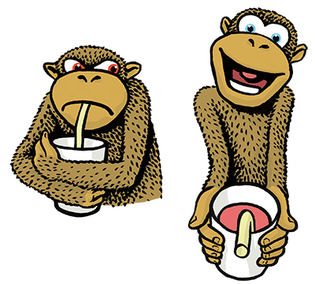 loading
loading
FindingsTo share, or not to shareLessons from monkeys about the neuroscience of generosity.  Gregory NemecView full imageGiven the choice between enjoying a cup of juice alone or drinking the same amount of juice with another monkey, a rhesus monkey will usually choose the antisocial route. But given the choice between sharing the juice or wasting it, monkeys prefer to give it to another monkey. What’s groundbreaking about the Yale study published in Nature Neuroscience, however, isn’t what the monkeys choose; it’s what happens in their brains as they’re choosing. The researchers, led by psychology and neuroscience professor Steve Chang, noticed that “prosocial” decisions (such as donating juice) often occurred when two regions of the brain were in sync with each other: the amygdala, thought to assign value to social information, and the medial prefrontal cortex, responsible for higher-order social cognition. When the interactions between those two regions were occurring in higher synchrony, the second monkey was more likely to receive donated juice. (Chang’s research team included Olga Dal Monte, Chengchi Chu, and Nicholas Fagan ’15.) The syncing of the two brain regions was reliable enough that researchers were able to decode the monkey’s choice just by looking at the neuronal data. As Chang puts it, “How the two brain structures interact provides a neural signature of social decision-making”—an advance in our understanding of the neurological basis of generosity and selfishness. Generosity is frequently thought of as a virtue each individual either chooses to cultivate or not. But these results seem to suggest that generosity may have a biological basis—predisposing us toward, or against, decisions that prioritize the benefit of others. Do such predispositions mean we have limited power over the decisions we make? It’s not yet clear. But Chang speculates that one day, boosting the synchrony between the two brain regions could be helpful for some psychiatric conditions.
The comment period has expired.
|
|